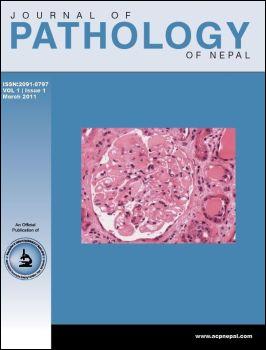Quantitation of α<sub>1A</sub> and α<sub>1D</sub>-adrenoceptor mRNA in prostate tissues from patients with symptomatic benign prostatic hyperplasia
DOI:
https://doi.org/10.3126/jpn.v1i1.4439Keywords:
Adrenoceptor subtypes, Benign prostatic hyperplasia, Quantitative reverse transcription-polymerase chain reactionAbstract
Background: To treat symptomatic benign prostatic hyperplasia α1-adrenoceptor antagonists with little antagonism at α1b-adrenoceptor were used to avoid orthostatic hypotension. In benign prostatic hyperplasia tissues α1D-adrenoceptor are thought to predominate, but in the Japanese experience, either α1A- or α1D- adrenoceptor antagonists can alleviate benign prostatic hyperplasia symptoms. We hypothesized that prostatic expression of α1A- and α1D-adrenoceptor varies quantitatively between patients.
Materials and Methods: We immunohistochemically localized α1A- and α1D-adrenoceptor within benign prostatic hyperplasia tissues, and quantitated mRNA expression for these subtypes by real-time quantitative reverse transcription-polymerase chain reaction.
Results: Immunohistochemistry detected both subtypes in stromal but not detected epithelial cells. Copy numbers of α1A-adrenoceptor mRNA in benign prostatic hyperplasia tissue were significantly higher than those of α1D-adrenoceptor mRNA. Among patients; the ratio of α1A- to α1D-adrenoceptor mRNA ranged from 1.0 to 8.4.
Conclusion: An ideal therapeutic antagonist for treating benign prostatic hyperplasia symptoms should block both α1A- and α1D-adrenoceptor
Keywords: Adrenoceptor subtypes; Benign prostatic hyperplasia; Quantitative reverse transcription-polymerase chain reaction
DOI: 10.3126/jpn.v1i1.4439
Journal of Pathology of Nepal (2011) Vol.1, 1-7
Downloads
Downloads
How to Cite
Issue
Section
License
This license enables reusers to distribute, remix, adapt, and build upon the material in any medium or format, so long as attribution is given to the creator. The license allows for commercial use.




